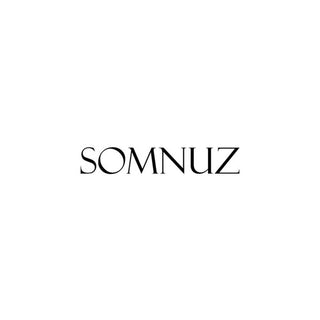There are various factors to consider when shopping for the best air conditioners. These include features, functions, and energy savings. With your air conditioner being a big and thoughtful investment, it's important to make the best use of it. While it's tempting to skip the air conditioning manual, knowing this and that can help you utilise your appliance better.
What do the aircon icon or symbols on the air conditioner's remote mean? Read this quick guide to familiarise yourself with the various air conditioning symbols and learn to use them to their full potential.
This guide includes:
I. Types of AC Remote Controls
II. General Aircon Symbols and Their Meanings
III. Mitsubishi Air Conditioner Symbols
IV. Daikin Air Conditioner Symbols
V. Midea Air Conditioner Symbols
VI. Panasonic Air Conditioner Symbols
VII. LG AC Air Conditioner Symbols
Types of AC Remotes
Standard Air Conditioner Remote Control or the Universal Aircon Remote Control

This is the most basic aircon controller that comes with your aircon purchase. It can come with full display options, a temperature display with signal bars, or no display for some units.
Smart Air Conditioner Remote

You can find a smart AC remote control on newer units with Wi-Fi compatibility. This can be accessed through your smartphone anywhere, everywhere, which is good if you often forget to turn your indoor unit off when you go out of the house.
Universal Remote Control

If you lose your remote, do not fret because there are several universal AC remotes that you can use. However, since they are universal remote controls, the unique features of your AC may not be accessed.
General Air Conditioner Remote Control Symbols and Their Meanings

Here are some common aircon mode symbols that you can spot on many aircon brands.
The Power Symbol
The power button, or on-off symbol, is the most common for all air conditioner types. This is a vertical bar surrounded by a semi-circle illustration similar to the television or laptop on and off buttons. Based on its name, the primary function of this air conditioner symbol is to turn the AC unit on and off.
Plus and Minus Symbols
The plus and minus aircon remote symbols are used to increase and decrease the desired temperature.
Cool Mode
The cool aircon mode symbol is one of the most widely used functions for an air conditioner. It is represented by a snowflake design. This is used to indicate instant air conditioner cooling. This mode is one of the most widely used functions for blowing cool air from the AC unit.
Heat Mode
Heat mode operates by blowing warm air into the room. This sun-like aircon mode symbol is also referred to as the reverse cycle, which is used until the desired temperature in a room is reached.
Dry Mode
Dry mode is often confused with cool mode, but the two work in different ways. While heat mode is represented by a sun symbol, dry mode looks like a water drop or a series of water drops. This air conditioner symbol is used to reduce humidity from the hot air while the cool air is being received.
Dry mode is not a very common function but is often seen on centralised air conditioning units. When the temperature naturally lowers during rainy days, it can be inconvenient to increase the cold air in the room. However, since there will be lots of uncomfortable excess moisture because of the rain, the dry mode is a great solution.
Fan Mode
Fan mode is represented by a fan symbol. This mode enables the built-in fan of the air conditioner unit to produce cool air at a lower capacity. This is typically used to ensure energy savings. The fan mode is also an efficient way to stop the AC unit from cooling further than it intends to.
Cool mode is one of the energy-saving air conditioner modes that is used for both the cool mode and providing warm air.
Fan Speed
An internal fan speed symbol looks like a signal bar that shows the current speed of the air conditioner's fan. Like a signal symbol, the higher the bar goes, the faster the fan speed is.
Auto Function
The auto mode is usually represented by arrows surrounding an "A" symbol. This mode is used for maintaining the desired temperature once the air conditioner has worked on it. This auto function is available in both cool mode and heat mode.
The auto function works in cool mode and heating mode.
Quiet Mode
The quiet mode, or silent mode, is typically illustrated with a human signalling silence or a moon symbol. The quiet mode is ideal for users who want their air conditioner to operate silently during their sleep.
Vertical Air Swing
The vertical air swing air conditioner symbol is represented by an AC symbol bearing multiple strokes, like an arc of air swinging from the unit. Vertical air swing functions allow your air conditioner to direct the air swing vertically. This can be in a static or rotating mode up to 90 degrees.
Horizontal Air Swing
Horizontal air swing, similar to vertical air swing, is illustrated as an AC unit symbol with air strokes swinging horizontally. This mode works the same way as a vertical air swing but in a horizontal setting.
Turbo Cooling
Turbo cooling forces the maximum capacity of the air conditioner within 15 to 30 minutes to cool the room in an instant. This symbol appears as a thunder symbol or a human showing both biceps.
Now that we know what the common air conditioner remote control buttons used by most air conditioner brands look like, let's look at the common AC remote symbols used by some specific brands. Note that various brands have various models and special functions. We highly suggest reviewing your unit's user manual to better understand its operations.
Energy Saving Feature
The energy-saving or power-saver mode allows the unit to reduce its power and electricity consumption. Many air conditioners offer this function, which shoppers love.
Mitsubishi Electric Air Conditioner Remote Control Symbols

Air Purification Symbol
The Mitsubishi Electric air conditioner has an air purification feature that is generally described by sparkling symbols. This feature is used to purify the indoor air through the plasma filter while providing the right temperature.
Natural Air Flow
In the mitsubishi aircon remote control, the natural flow function is represented by airflow symbols beside a tree. This functions by bringing natural-like air flow by swinging the air at different speeds and directions, mimicking a natural breeze. This is efficient for people who love a more subtle and natural air conditioning system.
i-See Sensor
An innovative function, the i-See Sensor, uses the unit's temperature sensor to detect the current temperature and control the required air direction for the room. This is represented by a spotlight illustration.
Fan Mode
Fan mode is a Mitsubishi mode where the system circulates air within a space without heating or cooling it, which can be useful for increasing air circulation or providing ventilation without changing the temperature.
Daikin Air Conditioner Remote Control Symbols (Daikin AC Modes)

Comfortable Air Flux Symbol
This Daikin ac mode or Daikin air conditioner mode is represented by an arrow symbol going over the head of a figure. This is used to produce an ascending air flux direction for cooling or a descending air flux direction for heating. This is to provide warm or cold air more comfortably.
Econo-Daikin Function
This function is highly efficient in terms of lowering the power consumption of the unit. This is basically the energy-saving mode of the air conditioner. This mode is represented by a descending arrow symbol.
Daikin Smart Eye Function
The smart eye function works to detect movements in a room. This innovative feature can be used to save energy. If you activate this feature with a symbol of a figure with signal rays, this Daikin ac remote control function will look for movements inside the room and will direct the unit into energy-saving mode if there are none.
Midea Air Conditioner Remote Control Symbol

Eco Mode
The eco mode is used to lower the unit's power consumption by putting your AC into energy-saving mode. This is represented by the Eco symbol.
Follow Me Feature
When the Follow Me function is on, the remote control will display the current location's actual temperature. Based on this data, the unit will receive more precise temperature information for a better AC cooling range and operation. With this, you don't have to deal with inconsistent temperatures, especially in hotter areas of your room. This is represented by a human symbol.
Repellent Function
Some Midea air conditioner units have a repellent function which sends some sound frequencies to repel mosquitos.
Panasonic Air Conditioner Remote Control Symbols

Powerful/ Quiet
You may switch from powerful to quiet mode with the powerful/quiet setting. The powerful mode is used to reach the desired temperature quicker, while the quiet or sleep mode is used to reduce operating noise.
Nanoe-G Purifier
This is an excellent feature presented by Panasonic. This feature is used to purify the air and improve its quality. This feature is automatically activated when the air conditioning unit is turned on. However, you can also activate air purification when the unit is off. This will operate as a fan.
LG Air Conditioner Remote Control Symbols

Air Ionizer
This feature functions to eliminate bacteria from your indoor air with the use of negative ions. This feature is represented by a tree surrounded by negative ions.
Internal Unit Cleaning Function
The internal unit cleaning function automatically cleans and dries the indoor unit. When this feature is active, the air conditioning unit will run in its ventilation mode for half an hour even while the unit itself is turned off. This is illustrated by a box-like unit with air-flowing symbols.
Sleep or Night Mode
While some air conditioners represent sleep mode with a moon symbol, this sleep or night mode is represented by a sleeping star symbol. When the sleep mode is activated, the air conditioner will work to bring more comfort to your sleep by automatically increasing the temperature by 1°C every half hour.
Why is it Important to Understand Aircon Remote Symbols?

The symbols, icons, and controls are very beneficial to help you make the most of your unit while preserving its quality. You will be surprised at how much potential isn't explored because of the unfamiliarity. So while you invest in an innovative air conditioner, make the most of it by understanding its functions.
FAQ:
1. What is the meaning of econo cool?
Econo Cool is an energy-saving feature found in some air conditioning systems, designed to optimize the cooling process by adjusting the airflow direction and temperature set points. This mode allows for efficient cooling while reducing energy consumption, ultimately leading to cost savings on electricity bills without compromising comfort.
2. What is the difference between Econo Cool and Dry Mode in air conditioning systems?
Econo Cool and Dry Mode serve distinct purposes in air conditioning systems. Econo Cool is an energy-saving feature that optimizes cooling by adjusting airflow and temperature settings, reducing energy consumption and lowering electricity bills. In contrast, Dry Mode targets humidity reduction without significant temperature adjustments, enhancing comfort by removing excess moisture from the air.
3. What are universal air conditioner remote control codes?
These codes are specific numbers used to program universal remotes to work with different brands and models of air conditioners, enabling control over various functions.



